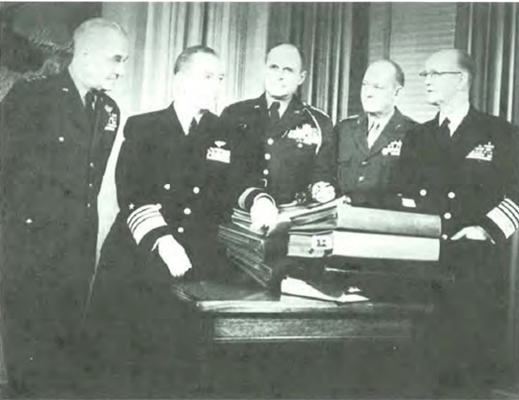United States Debate over Intervention at Dien Bien Phu
April 1, 1954

By late 1953, Viet Minh commander General Vo Nguyen Giap has surrounded the large French garrison at Dien Bien Phu. In early 1954, Giap has over 35,000 Viet Minh soldiers with at least 100 artillery pieces on the high ground overlooking the French position.
On March 13, 1954 the Viet Minh launch a series of attacks against French strong points around Dien Bien Phu. Viet Minh forces quickly overrun two major hill outposts that the French use to protect the garrison and adjacent airfield. The Viet Minh artillery makes short work of the airfield so that the French can only resupply by parachute drop. As the siege tightens, the U.S. Central Intelligence Agency (CIA) estimates that the French have little chance of success, and it becomes clear in Washington that the United States will soon have to make a decision on intervention.1
Why Didn’t the United States Intervene?
There are multiple interpretations of the Eisenhower administration’s decision not to intervene at Dien Bien Phu and each step along the way. It remains difficult for scholars to determine whether or not Eisenhower wanted to intervene and Congress and allied inaction blocked that plan, or if United Action was a political ploy to shift the responsibility for nonintervention elsewhere. If Eisenhower and Dulles knew which outcome they wanted, they left scant evidence of those desires for future scholars.
Some historians have argued that neither Secretary of State John Foster Dulles nor President Eisenhower ever intended to send U.S. troops to Indochina to aid the French. These scholars claim that the debate over intervention and congressional involvement was a political maneuver on the administration’s part, calculated to induce China to back away from supporting the Viet Minh and allow the United States to gain leverage in the Geneva talks.
Other historians believe that Eisenhower was fully prepared to intervene at Dien Bien Phu and that Congressional consent would have given him a stronger bargaining position with allied nations. If Eisenhower had already decided to stay out of the war, these scholars say, he would not have spoken so unambiguously about the importance of Indochina to U.S. national security interests.
Various scholars also point out the deep divisions among the administration’s top advisers and Eisenhower’s own uncertainty about how to proceed. The president held deep anxieties about entering into racial, religious, and colonial conflicts that pitted the United States and Europe against the decolonizing world.
George C. Herring, America’s Longest War: The United States and Vietnam, 1950–1975 (4th edition; New York: McGraw-Hill, 2002), 44.
William J. Duiker, U.S. Containment Policy and Conflict in Indochina (Stanford, CA: Stanford University Press, 1994), 191; George C. Herring and Richard H. Immerman, “Eisenhower, Dulles, and Dienbienphu: ‘The Day We Didn’t Go to War’ Revisited,” The Journal of American History 71 (September 1984), 349, also suggest that top civilian leaders held little enthusiasm for intervention.
Fredrik Logevall, Embers of War: The Fall of an Empire and the Making of America’s Vietnam (New York: Random House, 2012), 472–473.
Edward Miller, Misalliance: Ngo Dinh Diem, the United States, and the Fate of South Vietnam (Cambridge, MA: Harvard University Press, 2013), 73; Melanie Billings-Yun, Decision Against War: Eisenhower and Dien Bien Phu, 1954 (New York: Columbia University Press, 1988).